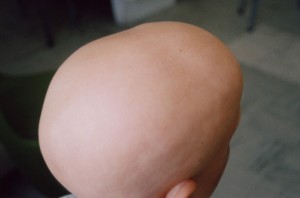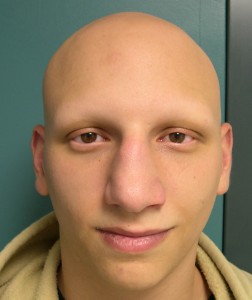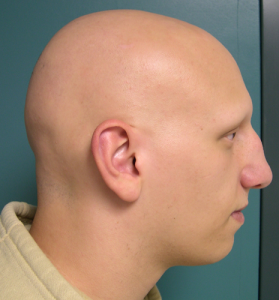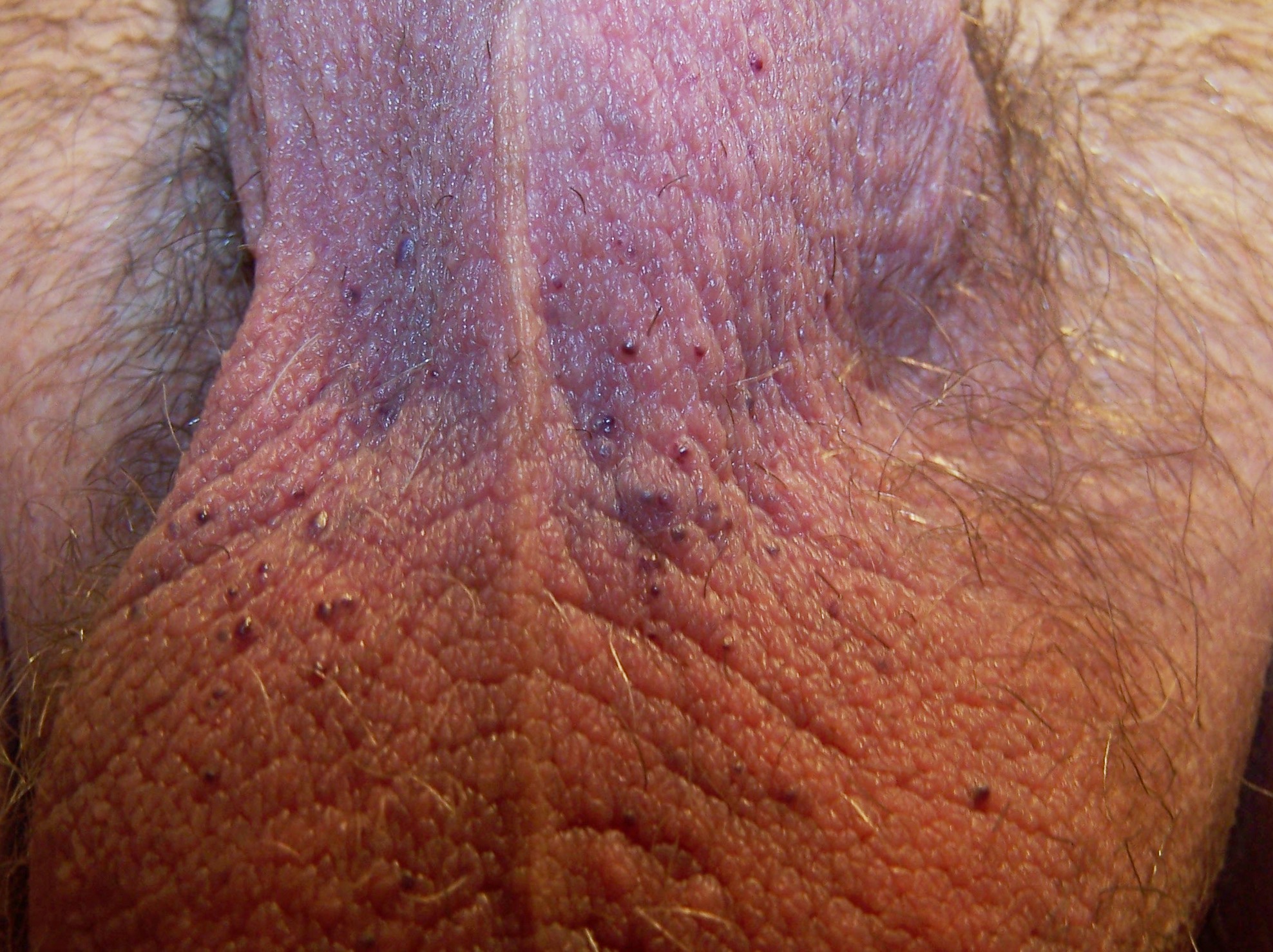Alopecia Totalis Definition
Page Contents
- 1 Alopecia Totalis Definition
- 2 Alopecia Totalis Incidence
- 3 Alopecia Totalis Types
- 4 Alopecia Totalis Causes
- 5 Alopecia Totalis Signs and Symptoms
- 6 Alopecia Totalis – Associated Disorders
- 7 Alopecia Totalis Prevention
- 8 Alopecia Totalis Diagnosis
- 9 Alopecia Totalis Treatment and Management
- 10 Alopecia Totalis Prognosis
- 11 Alopecia Totalis Diet
- 12 Alopecia Totalis Support Groups
- 13 Alopecia Totalis Images
Alopecia Totalis (AT) is a genetic hair condition in which an individual loses hair only from the scalp. It can be described as an intermediary disorder between Alopecia Areata, a condition causing patchy hair loss on scalp, and Alopecia Universalis that causes entire body hair loss.
Alopecia Totalis Incidence
This condition can occur in people from all age groups, but is most common in young adults and children. According to statistics, around 1 in 250,000 women and 1 in 125,000 men suffer from either Alopecia Totalis or Alopecia Universalis.
Alopecia Totalis Types
It can be classified into the two following types depending on the onset of the symptoms:
Type 1
In this type of AT, the hair loss is sudden and is characterized by complete loss of scalp hair within a short time.
Type 2
This second form of the disorder occurs slowly with patients experiencing patchy hair loss before losing all scalp hair eventually. This type can sometimes be associated with Alopecia Areata.
Alopecia Totalis Causes
The exact factors responsible for this disorder are not clearly known. However, it is believed to have an autoimmune origin and may result from some hereditary factors. Patients are often found to have certain abnormal genes that cause the hair loss problems. Mental stress is also considered to be a possible triggering factor for the disorder. AT does not result from any allergy or infection and thus, it is not contagious.
It is caused by an abnormal autoimmune response which causes the white blood cells (WBC) to release a chemical messenger named cytokines. Cytokines attack the healthy hair follicles of an individual, preventing the growth of hair. This results in complete hair loss on the scalp.
Considerable amount of research has been done to find out which gene is associated with AT. Experts are also trying to find out the reason behind the specific behavior of the WBC or the leukocyte antigen which triggers the hair loss. Some studies show that the leukocyte DQ3 (DQB1*03) was present in over 80% of people affected by the disorder. These studies also proved that individuals with AT and Alopecia Universalis (AU) often have increased levels of WBC antigen DR4 (DRB1*0401) and HLA DQ7 (DQB1*0301).
Alopecia Totalis Signs and Symptoms
Rapid hair loss on the scalp is the most important symptom of the disorder. AT is a painless autoimmune abnormality that does not affect the physical health of the patents. However, excessive hair loss can have a psychological effect. The nature of hair loss can vary from one patient to another as it sometimes begins gradually with symptoms like:
- Thinning scalp hair
- Receding hair line
- Patchy baldness
However, the condition in all cases ultimately leads to total baldness within approximately six months from the time of onset.
Alopecia Totalis – Associated Disorders
People suffering from AT are otherwise healthy without any other health ailments. But, studies show an increase occurrence of certain conditions in people with this hair loss problem. These associated conditions includevitiligo, Addison’s disease, Down’s syndrome and various thyroid disorders. It is also believed to increase the chances of some skin disorders. However, many individuals with AT do not develop any of the above mentioned diseases.
Alopecia Totalis Prevention
It is generally not possible to prevent AT as it is caused by certain genetic factors or unknown autoimmune responses. However, one can reduce the risk of hair fall by keeping the stress level low through regular stress-release techniques like yoga. Scientists are trying to find out if there are any preventive measures to keep the condition from occurring.
Alopecia Totalis Diagnosis
This type of hair loss is counted among skin disorders as it occurs in the skin of the scalp and is diagnosed by dermatologists. The patterns of hair loss can help to make the diagnosis and to decide the type of AT present in the patient. Diagnostic examinations like scalp biopsy and various blood tests can be used for detecting the problem. Blood tests are performed for determining if an affected individual has any underlying autoimmune diseases. In cases of Type 2 AT, the diagnostician also has to differentiate it from Alopecia Areata.
Alopecia Totalis Treatment and Management
There are several treatment options for the management of this type of hair loss. However, it is quite difficult to cure the disorder and regrow the hair once it causes complete loss of scalp hair. In most cases, the hair loss is permanent.
Immunotherapy
Immunotherapy is the most commonly used treatment option for treating AT. It involves using the normal chemical responses of the body for treating the condition. A substance, that would cause allergic reaction, is applied to the scalp of the patient. The body responds with the production of chemicals that fight the allergen. This stimulates the hair follicles to produce new hair. Anthralin, glucocorticoids injections and oral glucocorticoids are often used in this treatment.
Methotrexate, a common treatment for various autoimmune conditions, can also be used in the treatment of this condition.
Steroid Therapy
This is a useful treatment option in which doctors prescribe steroids in the pill or cream form. Steroid creams and gels are applied on the scalp to enhance growth of hair. The steroid therapy generally begins with mild dosages, gradually advancing to more aggressive treatments.
Sometimes, steroid medications are injected directly into the hair follicles of patients. The functioning of these corticosteroids resembles that of Triamcinolone as they remove unnecessary immune cells to allow hair growth. Multiple injections are required to regrow hair on the entire scalp.
Medications
Minoxidil is a lotion which mainly used for treating male pattern baldness. However, it can effectively treat mild cases of AT where the condition has not progressed to total baldness.
PUVA
In this treatment, long-wave ultraviolet (UV) light is used for reducing or eliminating the Langerhans cells in order to restore normal hair growth.
Natural Treatment
A combination of certain essential oils, such as rosemary, lavender and cedarwood, can be massaged on the scalp for enhancing the follicles to produce new hair. Primula obconica is an herbal plant that causes allergic reactions on the skin and stimulates growth of new hair. These herbal remedies are quite successful in treating AT in some individuals.
Alternative Treatments
According to some studies done in recent times, hypnosis can be useful for reversing AT in some people. However, it should not be used as the primary treatment and is useful only as a complementary remedy. Hypnosis can effectively manage stress and anxiety in the patient, increasing the success rate of the primary treatment measures.
Ayurvedic and homeopathic treatments are other possible remedies that may be useful for people with complete scalp hair loss. Acupuncture therapy may be successful in re-growing the hair in some cases.
Cosmetic Management
Wigs and hairpieces can be used by people who have suffered complete loss of scalp hair. These can help patients to cope better with the disorder.
Hair transplant surgeries are generally not used for treating this type of hair loss. The autoimmune responses causing the disorder will continue to discard the hair follicles even after the surgery and cause hair loss. It is important to manage the underlying cause for treating AT successfully.
Alopecia Totalis Prognosis
AT is usually associated with a low recovery rate. In most cases, the condition does not cause any serious health disorder and patients remain healthy otherwise. However, the hair loss is often incurable and permanent.
Alopecia Totalis Diet
Following a proper diet is very important for maintaining the health of the hair. Individuals with the early signs of this disorder should follow a diet that contains plenty of vitamin rich foods. Nutrients like iodine, iron and copper as well as the vitamins A, B and D are very important for preventing further hair loss. According to some experts, maintaining a gluten-free diet can help in hair growth.
Alopecia Totalis Support Groups
There are many forums and foundations that provide facts and information about AT to help patients cope with the excessive loss of hair. These include:
National Alopecia Areata Foundation
710 C Street
Suite 11
San Rafael, California 94903
US
Fax: (415)472-5343
Tel: (415)472-3780
Email: [email protected]
Website: http://www.naaf.org
American Autoimmune Related Diseases Association, Inc.
22100 Gratiot Ave.
East Detroit, Michigan 48021
Fax: (586)776-3903
Tel: (586)776-3900
Email: [email protected]
Website: http://www.aarda.org/
Locks of Love
234 Southern Blvd.
West Palm Beach, Florida 33405-3099
Fax: (561)833-7962
Tel: (561)833-7332
Email: [email protected]
Website: http://www.locksoflove.org
Alopecia Totalis Images
The following pictures show how AT patients experience total loss of hair on their scalp.
Picture 2 – Alopecia Totalis Image

Picture 3 – Alopecia Totalis
Alopecia Totalis is a reasonably rare and often irreversible hair fall disorder which requires early treatment. Treating it during the early stages may allow re-growth of hair to a certain degree that helps patients to take part in normal social activities with confidence.
References:
http://www.hairlosstalk.com/alopecia/alopecia-totalis.php
http://www.top-hair-loss-remedy.com/alopecia-totalis.html
http://www.ehow.com/about_5370451_treatments-alopecia-totalis.html
http://www.dermnetnz.org/hair-nails-sweat/alopecia-areata.html
http://www.alopeciatotalis.info/



